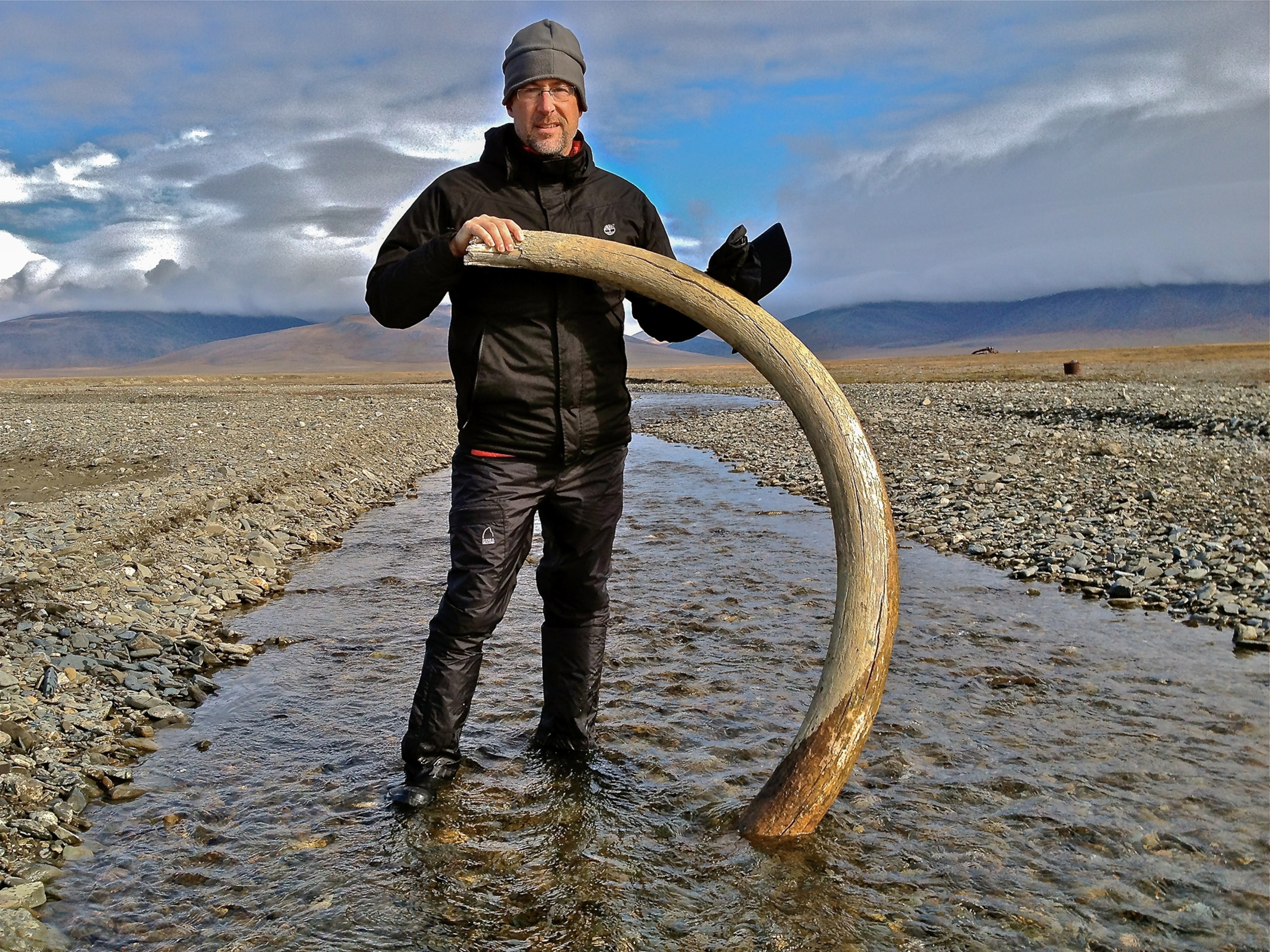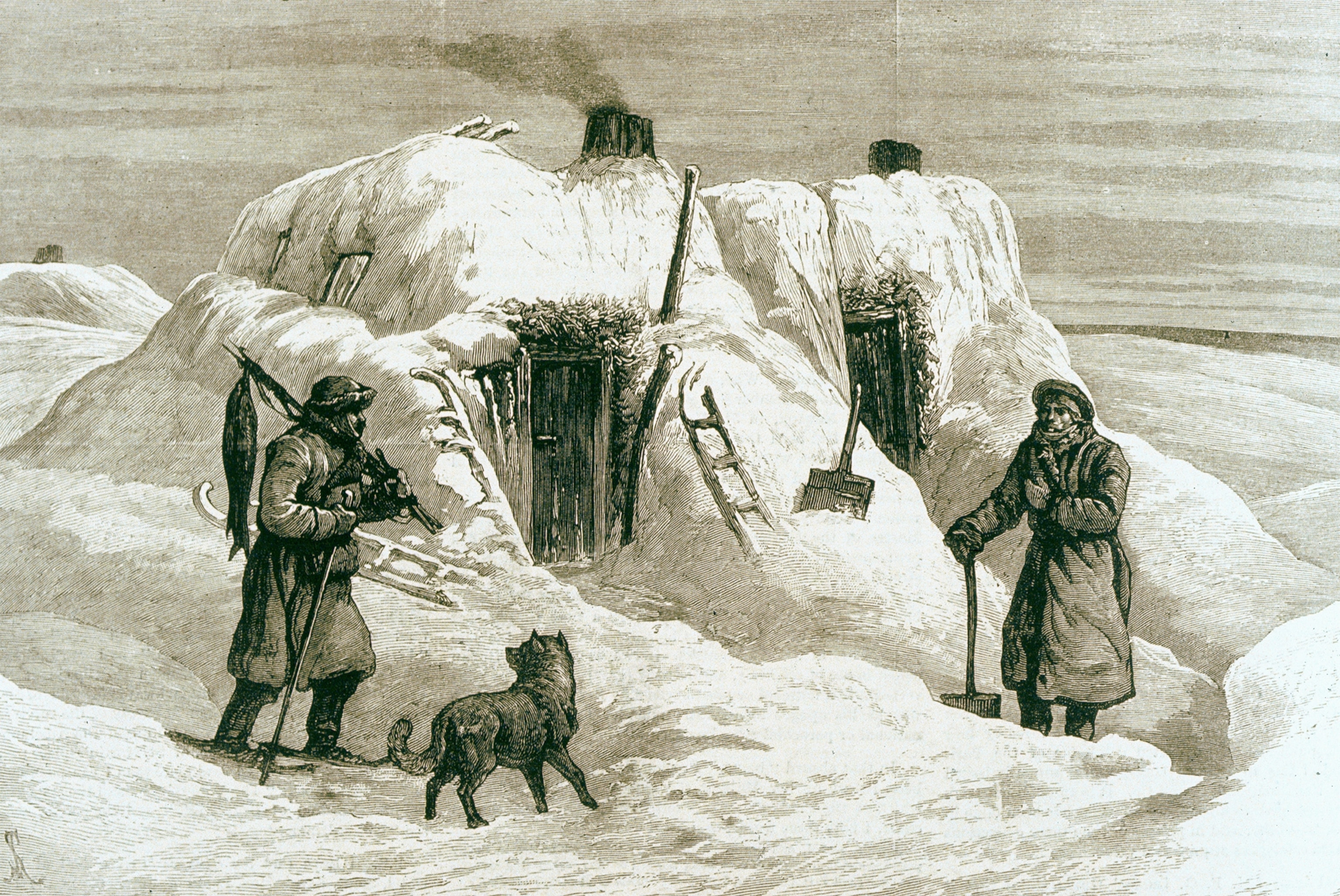
The Hair-Raising Tale of the U.S.S. Jeannette's Ill-Fated 1879 Polar Voyage
In a doomed quest for Americans to be first to the North Pole, 20 men died. Against all odds 13 survived.
On July 8, 1879, amid cheering crowds, the U.S.S. Jeannette, a three-masted former British navy gun vessel specially adapted for Arctic waters, set sail from San Francisco for the Bering Strait.
Its mission, Hampton Sides writes in The Kingdom of Ice: The Grand and Terrible Voyage of the U.S.S. Jeannette, was bold—to make the United States the first nation to reach the North Pole.
Bankrolled by James Gordon Bennett, Jr., owner of the New York Herald—the Rupert Murdoch of his day—the expedition would not only announce America's arrival on the world stage but also sell a lot of newspapers.
But it wasn't to be. "Nipped" in the ice just north of the 75th parallel and the remote New Siberian Islands, the Jeannette eventually sank to the bottom of the sea, taking with it the dream of planting the Stars and Stripes at the top of the world.
What had begun as a patriotic mission now became a story of endurance, leadership, and survival in horrific circumstances, as the men trekked a thousand miles across the frozen wastes of the Arctic to Siberia.
Here, Sides—editor at large with Outside magazine—tells us how the discovery of a box of letters in an attic fired his imagination; that Gordon Bennett liked to race horses in the nude; how the ethics of journalism influenced exploration; and how, one day, he dreams of finding the U.S.S. Jeannette and bringing her home.
The story of the U.S.S. Jeannette's doomed voyage to the North Pole is a long-forgotten saga. What made you dig it out of the permafrost?
I actually first found out about it by virtue of writing a story for National Geographic about the great Norwegian explorer Fridtjof Nansen. There is a museum dedicated to him and his vessel, the Fram, in Oslo. While I was there, I kept seeing references to the U.S.S. Jeannette and to the American explorer George Washington De Long.
I said: Wow! What is this thing? I'm an American, but I've never heard of this before. So I filed that away as a good journalist should and started burrowing slowly but surely into the primary material when I got home. What I found was this amazing story, which was a sensation in its time but had somehow slipped between the cracks of history.
You spent three years researching and writing the book. Were there any eureka moments in the research?
There were a couple of them. One was early on when I tracked down a distant relative of the commander, Captain De Long, in Connecticut. She was an elderly woman who said something historians dream of: "It's funny you called, because I have a trunk full of old letters that I found in the attic, and I don't know what to do with them. Maybe you'd want to come look at them."
Did I ever! I immediately flew to Connecticut to check them out and discovered they were the personal papers of Captain De Long's wife, Emma. She lived to the ripe old age of 91 and had collected and saved everything, including all her love letters during their courtship days and letters that she wrote while the expedition was in the Arctic, which she hoped would somehow reach her husband by way of Arctic whaling vessels. It was a little treasure trove, one of those cool things that happened, where lightning strikes. And a lot of these letters ended up in the book.
The voyage was funded by newspaper tycoon Gordon Bennett, who emerges as a sort of Rupert Murdoch on steroids. Tell us about him—and some of his odder habits.
[laughs] Gordon Bennett, Jr., was a wealthy and eccentric Gilded Age tycoon. He was the publisher of the New York Herald, which was then the largest paper in the world. He was one of these spoiled brats of the Gilded Age, who pretty much did whatever he wanted. He was into spectacle and sports. He was a duelist. He had yachts all over the world. He was a reckless sailor, who won the first transatlantic yacht race and was into balloon racing. Bennett also brought tennis to the U.S. from England, building an enormous palace in Newport, which is now the International Hall of Fame for tennis.
One of the sports he did was four-in-hand coach racing around New York, which, for some reason, he liked to do in the nude. So he became known as the "Naked Horseman."
The leader of the expedition was George Washington De Long. What sort of a man was he?
A real straight shooter. Very thorough. Very capable. A career U.S. Navy man who had fallen in love with the Arctic during an earlier expedition to Greenland and decided that he wanted to return to it. He was captivated by the puzzle of what's up there at the top of the world. And he devoted the rest of his life to the goal of being the first man to reach the North Pole.
This is the very end of the nautical age of polar exploration, when there were still people who thought you could somehow reach the North Pole by ship, as opposed to sledges and dogs and so forth. De Long wanted to do this for the Navy, and for personal glory, of course. But also for science. So he spent five years very carefully planning this expedition. Alaska had been fairly recently purchased from Russia, and people desperately wanted to know what was north of our new territory. So the idea was to push north of the Bering Strait and try to reach the North Pole by a route that had never been tried before.

How did the Jeannette mission connect with America's new sense of self-confidence as a "Great Nation"?
I wanted to write about the Gilded Age, this amazing period after the Civil War when the country was finally emerging from the devastation of war. We're trying to do big things on the world stage, flex our muscles, and compete with the European powers. And this was a legitimate venue for that kind of competition.
Up to this point most of the great polar explorations had been conducted by the British or the Scandinavians, sometimes the Russians. But the United States was entering this game. It was a time of stirring ambition, and there was enough money floating around, among individuals like Gordon Bennett, and enough interest. This was something that everyone, north and south, could get behind: to try and plant the American flag at the North Pole.
Like the moon shots in the 1960s?
It was certainly viewed that way at the time. The North Pole seemed as inaccessible as the moon. There was also a good bit of nationalism behind it. We wanted to beat the British and the Scandinavians and the other powers. There was also a sense of Manifest Destiny at work. We'd moved west all the way to San Francisco. We'd built the transcontinental railroad. We'd just bought this new territory in Alaska. It was as though Manifest Destiny stopped heading west, took a right turn, and went due north.
You call the Jeannette's multinational crew "a cross-section of the Gilded Age." Tell us about some of them.
It was a hodgepodge of folks who were American citizens. Immigrants from Denmark and Norway, from Scotland and England. There were two Chinese guys on board from Chinatown in San Francisco. And two Inuit dog drivers. The officers of the ship were all U.S. Naval Academy graduates: the navigator, the engineer, and, of course, De Long himself. There were also two civilian scientists on board. One was a Smithsonian-affiliated naturalist. And there was also a meteorologist from Ireland.
One man who stands head and shoulders above the rest of the crew is the engineer, George Melville. What made him special?
Melville was said to be distantly related to Herman Melville, the writer, though I was never able to pin that down. But he was certainly a larger-than-life character. He could fix anything—the kind of guy that usually had a welding torch in his hand. He would take machines apart and rebuild them, or cannibalize other machines for parts.
He was the guy that De Long ended up having to rely on for everything. He's stoic, tough as nails, and as the story unravels and everything goes from bad to worse, he's the one who really picks up the pieces and keeps the expedition going. When everything completely falls apart, he goes back to Siberia and finds all the expedition's documents and tries to rescue people. And he never lets go of this story. It's with him until the end of his life.
Mark Twain once remarked that "going to sea develops all man's bad qualities and brings out new ones he didn't suppose himself mean enough for." Describe some of the tensions among the Jeannette's crew.
Any time you put 33 men together in a fairly small vessel for an extended time, there are tensions and personality clashes. Put them together for two years, locked in the ice, in polar conditions, and you can only imagine.
The Irish meteorologist on board, Jerome Collins, is a very interesting man and quite learned. But he has a propensity for delivering really bad puns and limericks. For a couple of days that can be wonderful. But for two years? Everyone on the ship wanted to kill this guy, including De Long! [Laughs]
After the ship became "nipped" in the ice, De Long and his men had to walk nearly a thousand miles to the coast of Siberia. What impressed you the most about their ordeal?
As soon as the ship sinks, the story changes abruptly. It is no longer a story of exploration and discovery. It becomes a stark story of survival, a story of leadership and comradeship, of holding this thing together against all odds.
They don't have much time. They know winter is coming. They've got the remaining summer months to reach Siberia—dragging their three small boats across this impossible landscape of sludge and slurry and slop. They're wet constantly. They're struggling in harness, like mules, for what turned out to be 91 days.
They were forced to hunt and eat some fairly exotic food. Have you ever tried "walrus sausage"?
[Laughs] I never have. But my editor thinks that we should come out with a companion cookbook of the Arctic because, as you say, the food they're eating is pretty exotic. To say the least! A lot of seal intestine and roast squab of seagull. And, yes, walrus and even polar bear. They eventually become expert hunters.

The explorers were helped greatly by the Yakut people. Give us a quick anthropological overview of these Siberian natives.
This is a tribe that is often mistaken for being related to the Eskimos. But they aren't. They look very much like Mongols. But they speak a language that is Turkic—they can be understood in Istanbul! But they've lived for a long, long time in this part of Siberia. I think they've always enjoyed being away from the tsar, from Moscow and St. Petersburg. They have their own little inland empire in the Lena Delta. And they played a huge role in saving these guys. There's one particularly touching moment where a Yakut woman washes Melville's frostbitten and dirty feet, then coats them with goose grease. It sounds kind of disgusting, but it worked miraculously.
These people didn't have to help at all. They probably thought: "Who are these guys who've come from the north? They must be either criminals or exiles." In some cases they thought they were from another world, that they'd literally come from beneath the ice. And yet when they saw what desperate straits the Americans were in, they really gave of themselves and embraced them.
They were also helped by the Russians. It's quite a contrast to U.S.-Russian relations today, isn't it?
[Laughs] It is! I was able to do the research for this book because of a unique window of time where our relations were better. There were a lot of scientists going to this part of the Arctic to study global warming. If I were to contemplate the journey today, as opposed to in 2012, I think it would be nearly impossible. But in the 1880s we were very curious about Russia, and they were very curious about us. The Jeannette survivors were even invited to meet with Tsar Alexander III.
Eleven men, including De Long, eventually perished. As an editor with Outside magazine, you often have the responsibility of sending people off on dangerous adventures. How do you judge Gordon Bennett's decision to send this mission out in order to sell newspapers?
Bennett was definitely of the old school. He was willing to take extreme risks in his own sporting adventures, whether it was sailing or auto racing. He thought that's just part of life. Life is risky. And the best stories, the greatest adventures, are going to be exceedingly risky.
He had already sent Henry Morton Stanley to Africa for the New York Herald to "find Livingstone," even though Livingstone wasn't really lost [laughs]. And the dispatches Stanley sent back were a huge hit. So Bennett was looking for an encore when he came up with the idea of bankrolling an expedition to the North Pole.
He didn't really view this as anything extraordinary—that he's possibly sending these men to their deaths. It's all about the paper. Though he certainly did take his responsibility to the widows seriously, subsidizing them for years. Whether he did a reckoning with himself, morally, is a good question. He was not exactly an introspective person. I think he felt this was just part and parcel of running a great newspaper—while advancing sport and science at the same time.
The Canadians have just discovered one of Sir John Franklin's ships after 170 years. How did you feel when you read the news? Do you think the Jeannette will ever be found?
I was fascinated by that story. And, of course, I have always wondered how we could find and photograph the Jeannette. It's actually not nearly as difficult as Franklin's ships. We know almost exactly where the Jeannette is because when it sank, De Long's men took very meticulous positional readings.
The only problem is that it's in Russian waters, near some islands that are somewhat disputed—the De Long Islands. So the hurdles for finding the Jeannette are more geopolitical than archaeological. I'm hoping this book might create an environment that down the line, when our relationship improves with the Russians, we could send out an expedition to recover the ship.
I've spoken with some folks in the Navy and at NOAA who are interested. It's certainly one of my passions. One of my secret wishes.
Simon Worrall curates Book Talk. Follow him on Twitter or at simonworrallauthor.com.







